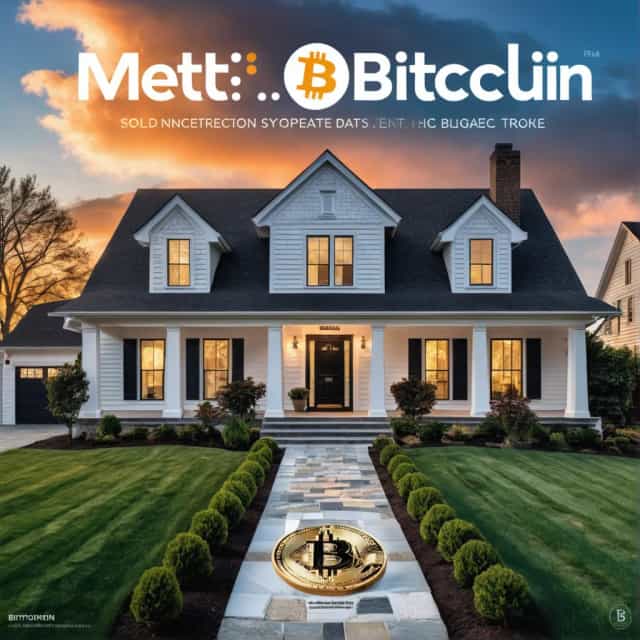
출처: Block Media
The Role and Significance of Stablecoins in Modern Finance
As cryptocurrencies continue to permeate global financial systems, stablecoins have emerged as a pivotal innovation. Despite their growing prominence, many struggle to articulate the unique advantages these digital assets offer compared to existing payment methods, such as credit cards or mobile payment systems, which have facilitated digital transactions for decades.
Stablecoins are digital tokens pegged to fiat currencies, such as the U.S. dollar, ensuring price stability. Unlike traditional financial systems, they leverage blockchain technology to facilitate peer-to-peer transactions without intermediaries like banks or payment processors. This integration of blockchain revolutionizes the mechanics of money transfer, particularly in scenarios where traditional systems falter.
Stablecoins vs. Traditional Payment Systems: A Paradigm Shift in Finance
In fiat-based systems, transactions are burdened by layered intermediaries—banks, remittance services, and payment processors—leading to higher costs, prolonged delays, and restricted operating hours. For example, international money transfers often take days or weeks to process, accruing excessive fees as they pass through multiple entities. These systems are confined to business hours, preventing transactions during weekends or holidays.
Stablecoins offer a transformative solution by operating on decentralized blockchain networks, bypassing intermediaries entirely. Transactions powered by stablecoins occur globally, 24/7, requiring nothing more than an internet connection. The decentralized design replicates the immediacy and simplicity of handing over physical cash but transcends geographic borders. Essentially, stablecoins reimagine financial infrastructure to promote inclusivity, speed, and cost-efficiency worldwide.
Key Advantages of Stablecoins
The inherent characteristics of stablecoins give rise to the following core benefits:
- Permissionlessness: Empowering global financial access without institutional restrictions.
- Programmability: Enabling decentralized automated systems through smart contracts.
- Low Costs: Reducing financial inefficiencies and transaction fees.
- High Speed: Facilitating instantaneous, real-time cross-border payments.
To illustrate, consider a freelancer in Argentina earning income from international clients. With a digital wallet, they can safeguard earnings in a stablecoin pegged to the U.S. dollar, effectively immunizing their assets against hyperinflation. They save on currency conversion fees, paying as little as $0.10 instead of $10, while completing transactions in seconds. This frictionless financial interaction was previously unattainable in traditional banking systems.
Applications like these extend broadly across saving, spending, remitting, and earning—a game-changer, especially in financially underserved regions.
Barriers to Stablecoin Adoption
Despite their transformative utility, stablecoins face notable challenges in attaining widespread adoption. Current user interfaces are often overly technical, creating barriers for non-expert users. Navigating blockchain-specific decisions like network selection, managing wallet addresses, safeguarding private keys, and bridging assets across platforms requires advanced knowledge.
For stablecoins to achieve mainstream adoption, they need infrastructure that simplifies accessibility. Google Chrome serves as a fitting analogy here; its accessible framework demystified complex web technologies and enabled the internet’s mass adoption. In the same vein, stablecoins need intuitive platforms to bridge their innovative potential with everyday usability.
Plasma: Revolutionizing Stablecoin Infrastructure
The blockchain ecosystem for stablecoins is rife with limitations, including slow transaction speeds, high fees, and network congestion. Much like Internet Explorer stagnated as web technologies advanced, existing blockchain platforms fail to meet the demands of a scalable global financial system. Plasma, a high-performance Layer-1 blockchain designed specifically for stablecoins, is positioned to address these inefficiencies.
Plasma’s mission parallels that of Google Chrome’s—acting as the "browser" of the stablecoin environment by abstracting technical complexity to deliver streamlined functionality.
PlasmaBFT: Redefining Transaction Speeds
Traditional blockchains often suffer from bottlenecks during high traffic, resulting in transaction delays. Ethereum, for instance, routinely experiences congestion as networks struggle to finalize transfers.
Plasma resolves these issues with its proprietary PlasmaBFT consensus mechanism, powered by the Fast HotStuff algorithm. This mechanism expedites the transaction verification process by batching multiple node signatures into a single step while simultaneously allowing new block proposals without waiting for the finalization of previous blocks. The result? Transaction settlements within seconds—even under peak conditions.
Similar to Chrome’s strategy of isolating tab processes for enhanced browser stability, Plasma optimizes throughput without compromising network reliability.
EVM Compatibility: Enabling Seamless Developer Integration
Developer accessibility is critical for ecosystem growth. Just as Google Chrome embraced universal web standards to simplify cross-browser compatibility, Plasma is fully compatible with Ethereum’s ecosystem, enabling developers to migrate existing apps and smart contracts effortlessly.
Built on Reth, a high-efficiency Ethereum client powered by Rust, Plasma ensures smooth integration with the Ethereum Virtual Machine (EVM). This compatibility allows developers to tap into familiar tools and environments, fostering innovation while lowering entry barriers.
Native Bitcoin Bridge: Unlocking New Potential for BTC
Bitcoin’s security and reliability make it a trusted digital asset, yet its lack of smart contract functionality limits its application in decentralized finance (DeFi). Existing systems address this through custodial accounts that issue wrapped Bitcoin—a process fraught with centralization risks and inefficiencies.
Plasma introduces a native Bitcoin bridge to enable BTC utilization within EVM environments. This innovation facilitates:
- Issuance of BTC-collateralized stablecoins.
- Development of a Bitcoin-driven financial ecosystem.
By integrating Bitcoin into DeFi without compromising its security, Plasma expands its utility, creating new opportunities for blockchain-based saving, spending, and lending.
Zero-Fee USDT Transactions: Setting New Standards
Echoing Chrome’s free browsing policy, Plasma eliminates transaction fees for USDT transfers—a revolutionary step in stablecoin usability. Using its Paymaster feature, Plasma automatically covers gas fees, requiring only minimal identity verification and transaction limits to prevent misuse.
This "frictionless" model ensures users are no longer hindered by managing multiple token reserves for transaction fees, streamlining their stablecoin experience.
Customizable Gas Options: Simplifying Fee Payments
Most blockchains mandate native tokens for transaction fees, complicating asset management across platforms. Plasma revolutionizes this practice with customizable gas token options, enabling users to pay fees using familiar assets like USDT or BTC. Approved token lists and real-time exchange rates ensure transparency and efficiency in fee processing, aligning user experience with global financial norms.
Confidential Transactions: A Modular Approach to Privacy
While blockchain transparency has benefits, it poses privacy risks, particularly for businesses. Plasma addresses this by developing confidential payment features, offering optional privacy akin to Chrome’s incognito mode. By leveraging one-time-use addresses and encrypted memos, Plasma ensures transaction confidentiality while maintaining DeFi compatibility.
This feature also incorporates mechanisms for lawful disclosures to foster regulatory compliance, balancing privacy and accountability.
Plasma’s Strategic Vision for Global Adoption
Plasma has already garnered substantial attention through successful token offerings and high-profile campaigns, including a Binance Earn initiative that drew over $1 billion in demand. However, sustained growth depends on more than technical superiority—it requires ecosystem development.
Chrome transitioned from performance excellence to building a robust ecosystem of complementary tools. Plasma is adopting a similar approach by forging partnerships with DeFi protocols like AAVE and Pendle and actively engaging developers through community-building initiatives.
Plasma aims to unlock financial accessibility by introducing groundbreaking solutions like real-time payroll systems, microtransactions for digital content, and low-cost financial products. These innovations could cement Plasma as integral to the digital economy, much like Chrome became synonymous with internet browsing.
Ultimately, Plasma strives to abstract blockchain’s complexity to create intuitive solutions for stablecoin transactions. By bridging the gap between innovative technology and user-friendly design, Plasma aspires to be the "Chrome" of stablecoins—paving the way for mass adoption and transforming digital currencies into mainstream financial tools.










